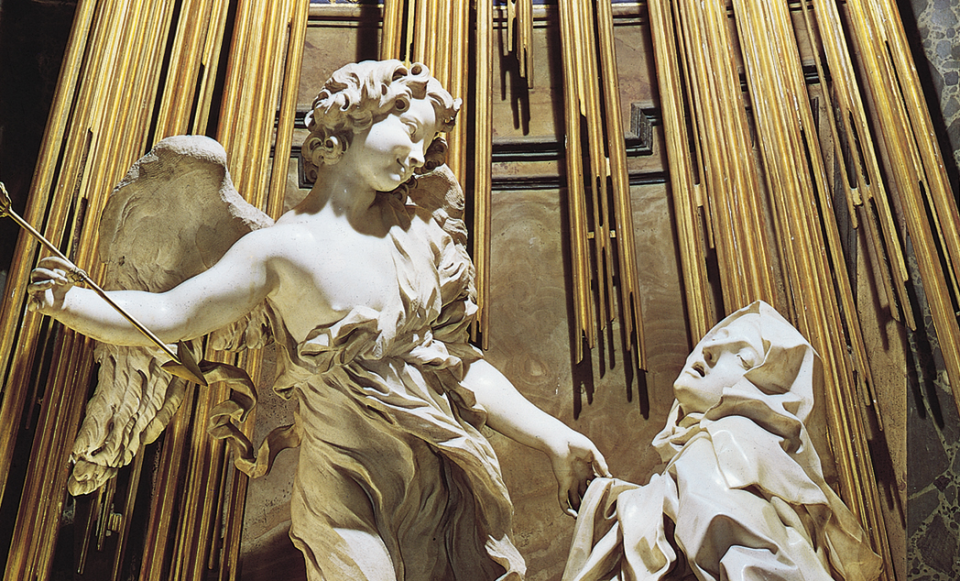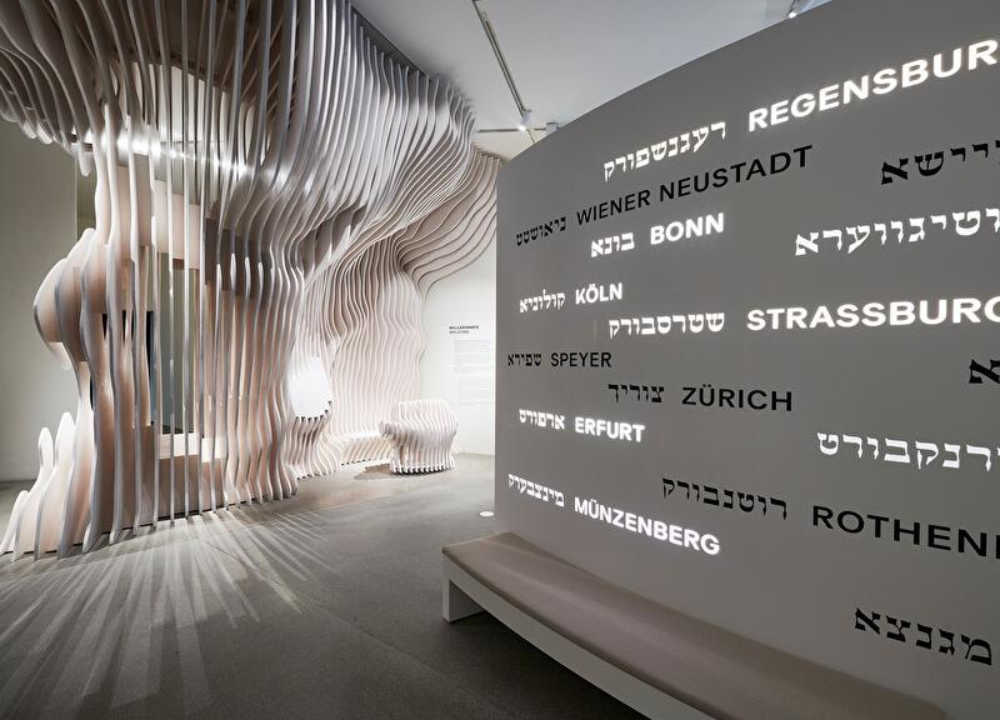The work of art “Judith Beheading Holofernes” is by a Caravaggisti. This painting showcases the dramatic style and use of light and shadow.
Caravaggisti were artists influenced by the Italian Baroque master Caravaggio. They adopted his techniques, including dramatic lighting, intense realism, and emotional storytelling. Caravaggio’s influence spread rapidly across Europe in the late 16th and early 17th centuries. His followers adapted his style to their own unique visions.
Notable Caravaggisti include Artemisia Gentileschi, Orazio Gentileschi, and Jusepe de Ribera. Their works often feature realistic depictions of human figures, strong contrasts between light and dark, and dramatic, often violent, scenes. Understanding the influence of Caravaggisti helps appreciate the evolution of Baroque art and its enduring impact on Western art history.
Caravaggisti Artists
The term Caravaggisti Artists refers to those artists influenced by the renowned Italian painter, Caravaggio. These artists adopted his dramatic use of light and shadow, creating intense and realistic works. Caravaggio’s impact on art was profound, leading many to follow his stylistic footsteps. Let’s delve into some key Caravaggisti artists and their unique contributions to the art world.
Caravaggio
Caravaggio, born Michelangelo Merisi, revolutionized the art world with his innovative techniques. He is known for his tenebrism, which uses stark contrasts between light and dark to create a dramatic effect. His works often depicted intense emotional scenes, capturing raw human emotions.
Some characteristics of Caravaggio’s art include:
- Realism: Caravaggio painted from life, using real people as models.
- Chiaroscuro: This technique involves the dramatic use of light and shadow.
- Naturalism: He depicted subjects in a naturalistic manner, focusing on realism.
One of his famous works, “The Calling of Saint Matthew,” showcases these features. The painting captures the moment Jesus calls Matthew to follow him, bathed in a powerful beam of light.
Artemisia Gentileschi
Artemisia Gentileschi, a pioneering female artist, was deeply influenced by Caravaggio. Her works are celebrated for their strong, dramatic compositions and powerful depictions of women. Artemisia often portrayed biblical and mythological scenes, with a focus on female protagonists.
Important aspects of Gentileschi’s art include:
- Empowerment: Her paintings often depict strong, courageous women.
- Dramatic Lighting: Like Caravaggio, she used intense contrasts of light and dark.
- Emotional Depth: Her works convey deep emotion and intensity.
One notable painting by Gentileschi is “Judith Slaying Holofernes.” This painting shows Judith, a biblical heroine, beheading the Assyrian general Holofernes. The dramatic lighting and powerful imagery exemplify her Caravaggisti influence.
Giovanni Baglione
Giovanni Baglione was another prominent Caravaggisti artist. Initially a rival of Caravaggio, he later adopted his style, integrating dramatic lighting and realistic portrayals into his works. Baglione’s art often depicted religious themes, with a focus on emotional intensity.
Key elements of Baglione’s art include:
- Dramatic Composition: His works feature dynamic and powerful compositions.
- Realistic Detail: Baglione paid close attention to detail, enhancing realism.
- Religious Themes: Many of his paintings focus on religious subjects.
One of Baglione’s significant works is “Sacred Love and Profane Love.” This painting portrays a dramatic struggle between sacred and profane love, using intense lighting and detailed realism to convey the emotional conflict.

Characteristics Of Caravaggisti Art
The Caravaggisti were followers of the Italian Baroque painter Caravaggio. They mimicked his unique style, creating dramatic and realistic artwork. Understanding the characteristics of Caravaggisti art helps identify which works belong to this group. They often use bold techniques and elements that make their art stand out.
Chiaroscuro Technique
The chiaroscuro technique is a hallmark of Caravaggisti art. This method involves the use of strong contrasts between light and dark. It gives the artwork a sense of volume and three-dimensionality.
Caravaggisti artists use chiaroscuro to create a dramatic effect. Shadows and highlights play a key role in their paintings. Key features of the chiaroscuro technique include:
- Intense contrasts: Dark backgrounds with illuminated subjects.
- Soft transitions: Smooth gradations from light to dark.
- Depth perception: Enhancing the three-dimensionality of figures.
Here’s a simple table explaining the impact of chiaroscuro:
| Element | Impact |
|---|---|
| Light | Highlights the main subject |
| Shadow | Adds depth and mystery |
Caravaggisti use light and shadow to guide the viewer’s eye to important parts of the painting. This technique creates a powerful visual experience.
Dramatic Lighting
Dramatic lighting is another key feature of Caravaggisti art. They often use a single light source to illuminate their subjects. This creates a theatrical effect, much like a spotlight on stage.
Important aspects of dramatic lighting include:
- Single light source: Often coming from one direction.
- High contrast: Strong differences between light and shadow.
- Focused illumination: Drawing attention to specific areas.
Artists use dramatic lighting to evoke strong emotions in the viewer. The light often highlights faces and hands, emphasizing expressions and gestures. This technique enhances the narrative quality of the artwork.
Consider the painting “The Calling of Saint Matthew” by Caravaggio. The beam of light directs attention to Saint Matthew, making the scene more intense. This method creates an almost cinematic effect, pulling viewers into the story.
Realism In Subject Matter
Realism in subject matter is a defining trait of Caravaggisti art. They portray their subjects with lifelike accuracy, often depicting ordinary people.
Key elements of realism in Caravaggisti art include:
- Natural poses: Figures appear in believable, everyday positions.
- Detailed features: Realistic facial expressions and textures.
- Everyday scenes: Common activities and settings.
Caravaggisti artists aim to make their subjects relatable. They focus on human emotion and experience. This approach makes their art accessible and engaging.
For example, in Caravaggio’s “The Cardsharps,” the scene shows a common gambling scenario. The characters’ expressions and actions are depicted with stunning realism. This attention to detail makes the scene come alive, allowing viewers to connect with the story.
Realism in Caravaggisti art often includes imperfections. Wrinkles, scars, and other details are shown with honesty. This adds authenticity and depth to the artwork, making it feel real and immediate.
Identification Of Caravaggisti Work
Caravaggisti were artists influenced by the dramatic style of Caravaggio. Identifying their work involves examining specific characteristics. These characteristics include style, composition, light, and shadow. Understanding these elements helps in recognizing a Caravaggisti work.
Analyzing Style And Composition
To identify a Caravaggisti work, look at the style and composition. Caravaggisti often used bold and realistic depictions. Their paintings showed ordinary people in dramatic scenes. They focused on raw emotions and intense expressions.
Here are some key points to consider:
- Realism: Caravaggisti paintings often show realistic figures and settings.
- Emotion: The subjects display strong emotions and dramatic gestures.
- Composition: They use a strong central figure with detailed backgrounds.
- Chiaroscuro: This technique uses stark contrasts between light and dark.
Consider the painting’s overall balance and harmony. Caravaggisti balanced their compositions carefully. They often placed the main subject in the foreground. Background elements were less detailed but still important.
Here’s a table summarizing key characteristics:
| Characteristic | Description |
|---|---|
| Realism | Depicts lifelike figures and settings |
| Emotion | Strong, dramatic expressions |
| Composition | Balanced, with a central figure |
| Chiaroscuro | Strong contrasts of light and dark |
Examining Use Of Light And Shadow
Light and shadow play a crucial role in Caravaggisti works. Caravaggio’s followers mastered the use of light, known as chiaroscuro. This technique creates a dramatic effect. It highlights the main subject while casting deep shadows.
Look for these elements:
- Light Source: Often a single, strong light source illuminates the scene.
- Deep Shadows: Shadows are dark and well-defined, adding depth.
- Focus: Light focuses attention on key elements or figures.
Caravaggisti used light to guide the viewer’s eye. The light often comes from one direction, creating a spotlight effect. This technique emphasizes the drama and emotion in the scene.
Here’s an example of how light and shadow are used:
| Aspect | Description |
|---|---|
| Light Source | Single, strong, directional |
| Deep Shadows | Creates depth and contrast |
| Focus | Highlights main figures or actions |
By understanding these techniques, you can identify a Caravaggisti painting. Look for the dramatic use of light and shadow. These elements are key in recognizing the influence of Caravaggio.
Comparison With Other Art Movements
Caravaggisti were followers of Caravaggio, an Italian painter known for his intense realism and dramatic use of light and shadow. Identifying their work involves comparing it with other art movements. This comparison helps understand their unique style and influence.
Contrast With Baroque Art
Baroque art, like Caravaggisti, emerged in the 17th century. Yet, they have distinct differences:
- Lighting: Caravaggisti use chiaroscuro, highlighting intense contrasts between light and dark. Baroque artists also use light but focus on grandeur and movement.
- Emotion: Caravaggisti depict raw, sometimes gritty emotion. Baroque art often portrays grand, dramatic scenes with a sense of awe.
- Subjects: Caravaggisti focus on everyday people and realistic settings. Baroque artists often depict divine and royal subjects.
Below is a table highlighting these differences:
| Aspect | Caravaggisti | Baroque Art |
|---|---|---|
| Lighting | Chiaroscuro | Grand, dramatic lighting |
| Emotion | Raw, realistic | Dramatic, awe-inspiring |
| Subjects | Everyday people | Divine, royal |
Differences From Mannerism
Mannerism preceded Caravaggisti and has distinct features:
- Proportions: Mannerism often exaggerates proportions, creating elongated figures. Caravaggisti depict naturalistic, accurate proportions.
- Composition: Mannerist works have complex, sometimes chaotic compositions. Caravaggisti prefer clear, straightforward compositions.
- Emotion: Mannerist art often feels artificial. Caravaggisti aim for genuine, relatable emotions.
Below is a table highlighting these differences:
| Aspect | Mannerism | Caravaggisti |
|---|---|---|
| Proportions | Exaggerated, elongated | Naturalistic, accurate |
| Composition | Complex, chaotic | Clear, straightforward |
| Emotion | Artificial | Genuine, relatable |
Famous Works By Caravaggisti
The Caravaggisti were a group of painters who followed the revolutionary style of Caravaggio. They embraced his dramatic use of light and shadow, known as chiaroscuro. These artists created some of the most famous works in art history. This article explores two notable pieces by Caravaggisti: Judith Slaying Holofernes by Artemisia Gentileschi and The Calling of Saint Matthew by Caravaggio.
Judith Slaying Holofernes By Artemisia Gentileschi
Judith Slaying Holofernes is a powerful painting by Artemisia Gentileschi. This work showcases the dramatic style of the Caravaggisti. Gentileschi’s use of light and shadow is intense. The painting tells the biblical story of Judith, a heroine who saves her people by killing the Assyrian general Holofernes. The scene is violent and gripping.
Key elements of the painting include:
- Realism: The figures are lifelike, emphasizing their struggle.
- Emotion: Judith’s face shows determination, while Holofernes’ face shows shock and pain.
- Chiaroscuro: The use of light and shadow highlights the drama.
Gentileschi was one of the few female artists of her time. Her work often depicted strong women. She was influenced by Caravaggio but developed her own style. The painting is a testament to her skill and vision.
The Calling Of Saint Matthew By Caravaggio
The Calling of Saint Matthew is a masterpiece by Caravaggio. This painting captures a moment from the life of Saint Matthew. Jesus calls Matthew to follow him, transforming his life. The scene is set in a dimly lit room, typical of Caravaggio’s style.
Key elements of the painting include:
- Chiaroscuro: The dramatic light illuminates Matthew’s face.
- Gesture: Jesus’ hand points toward Matthew, symbolizing the call.
- Realism: The figures are depicted with naturalism, showing real people in a real setting.
Caravaggio’s use of light and shadow creates a sense of depth. The painting is rich in detail and emotion. It highlights the moment of divine intervention in an ordinary setting. This work is considered one of Caravaggio’s finest achievements. His influence on the Caravaggisti is evident in its dramatic composition.




